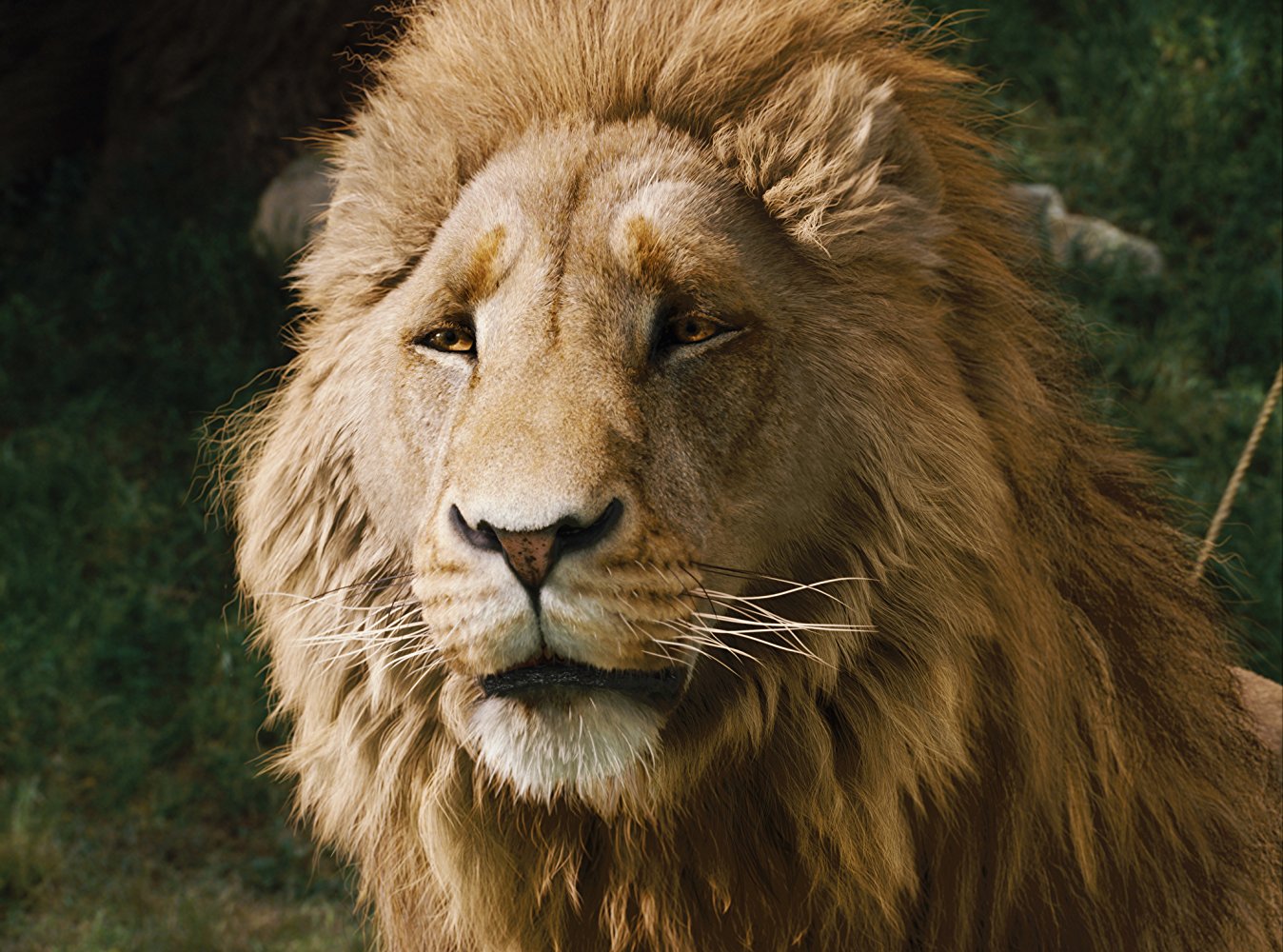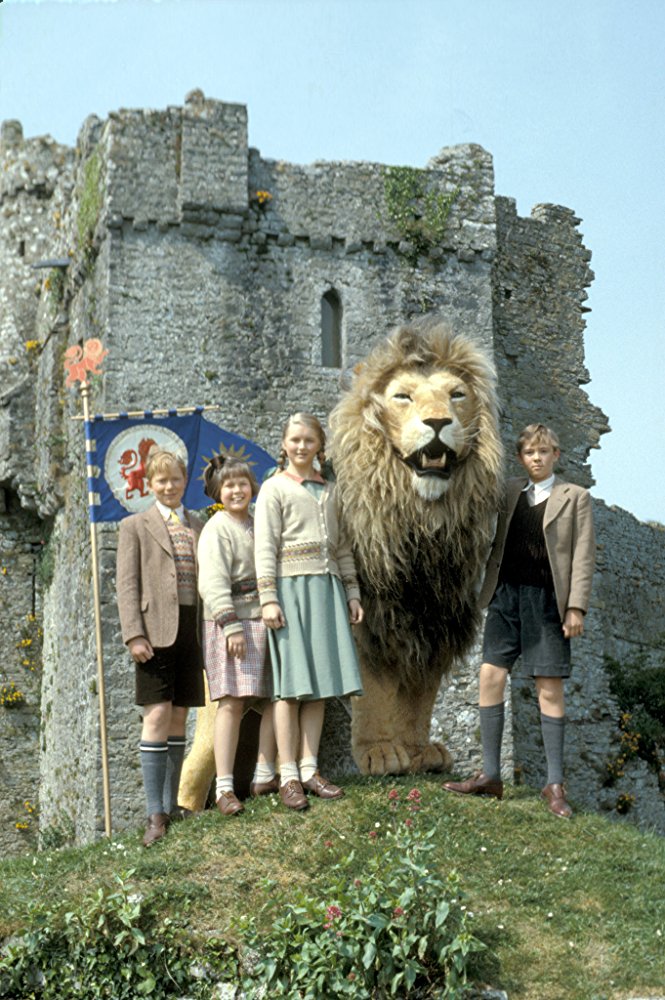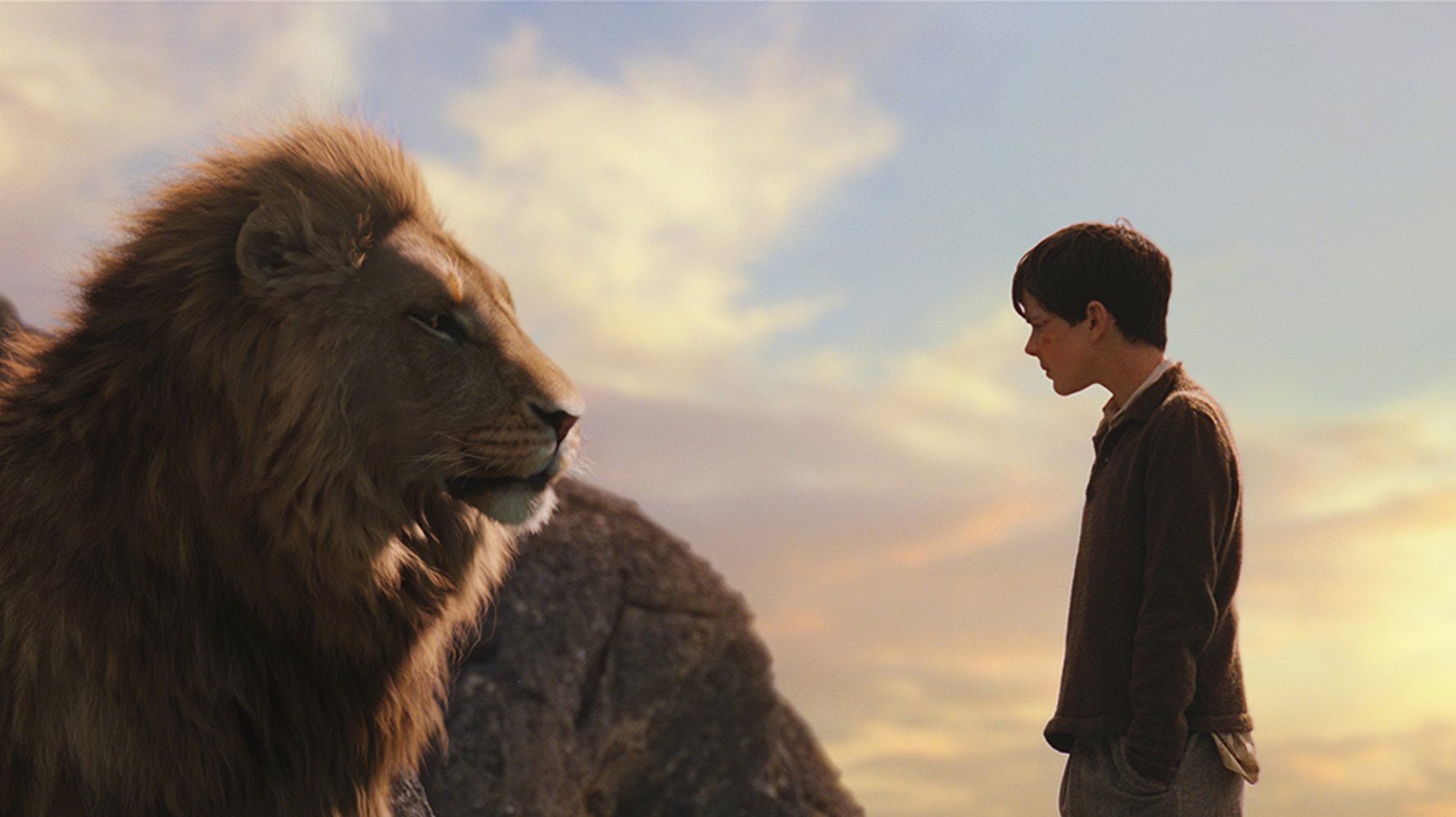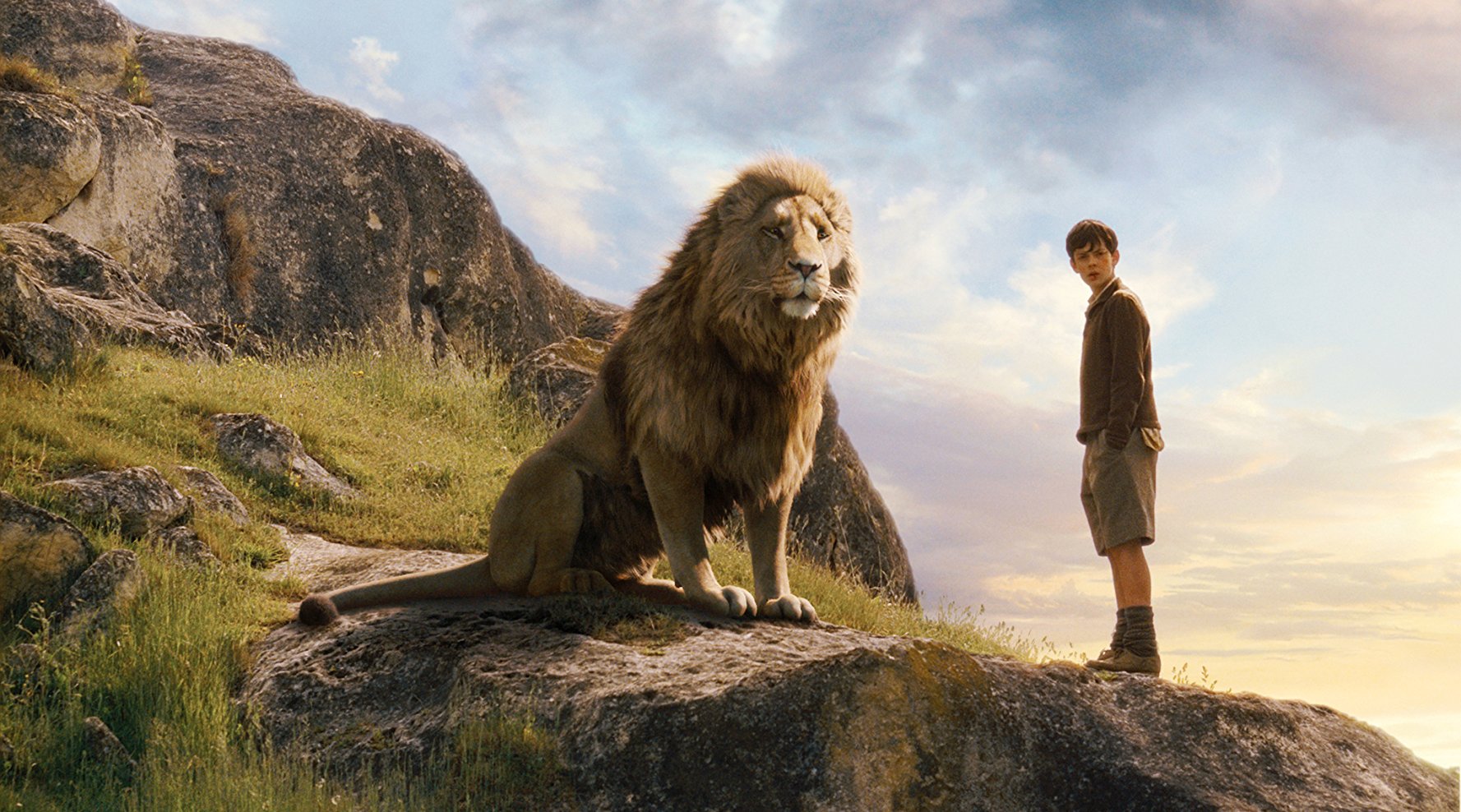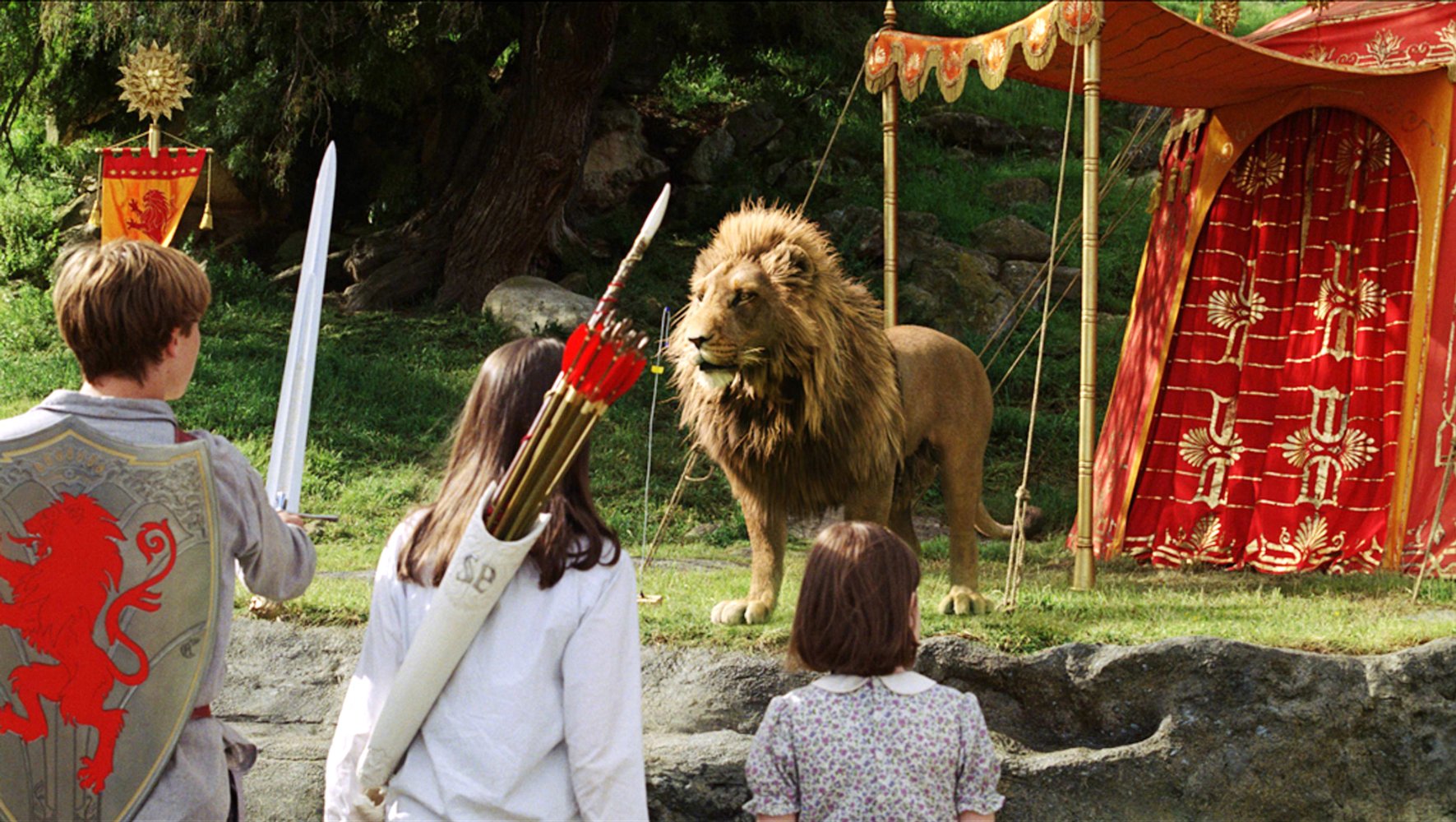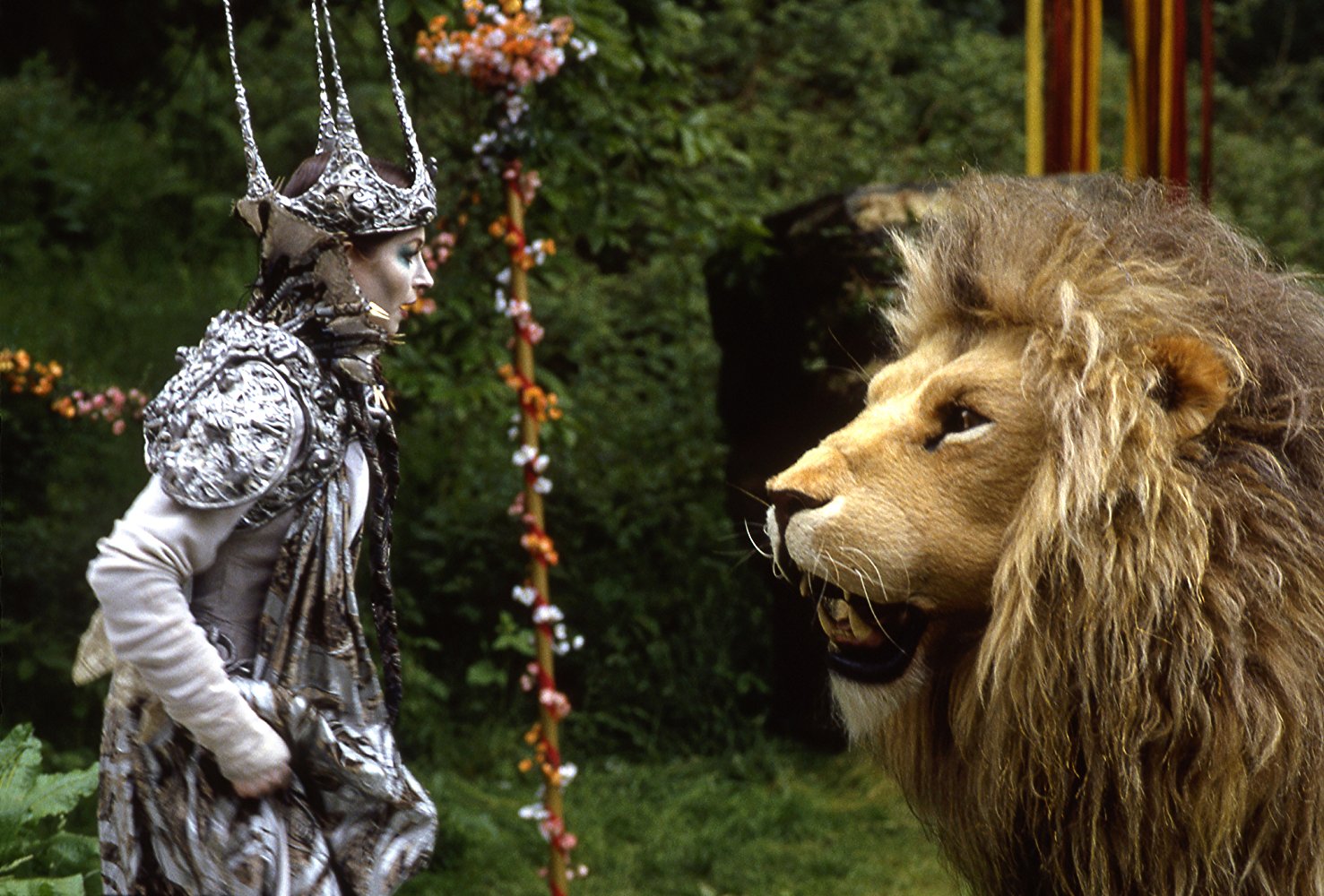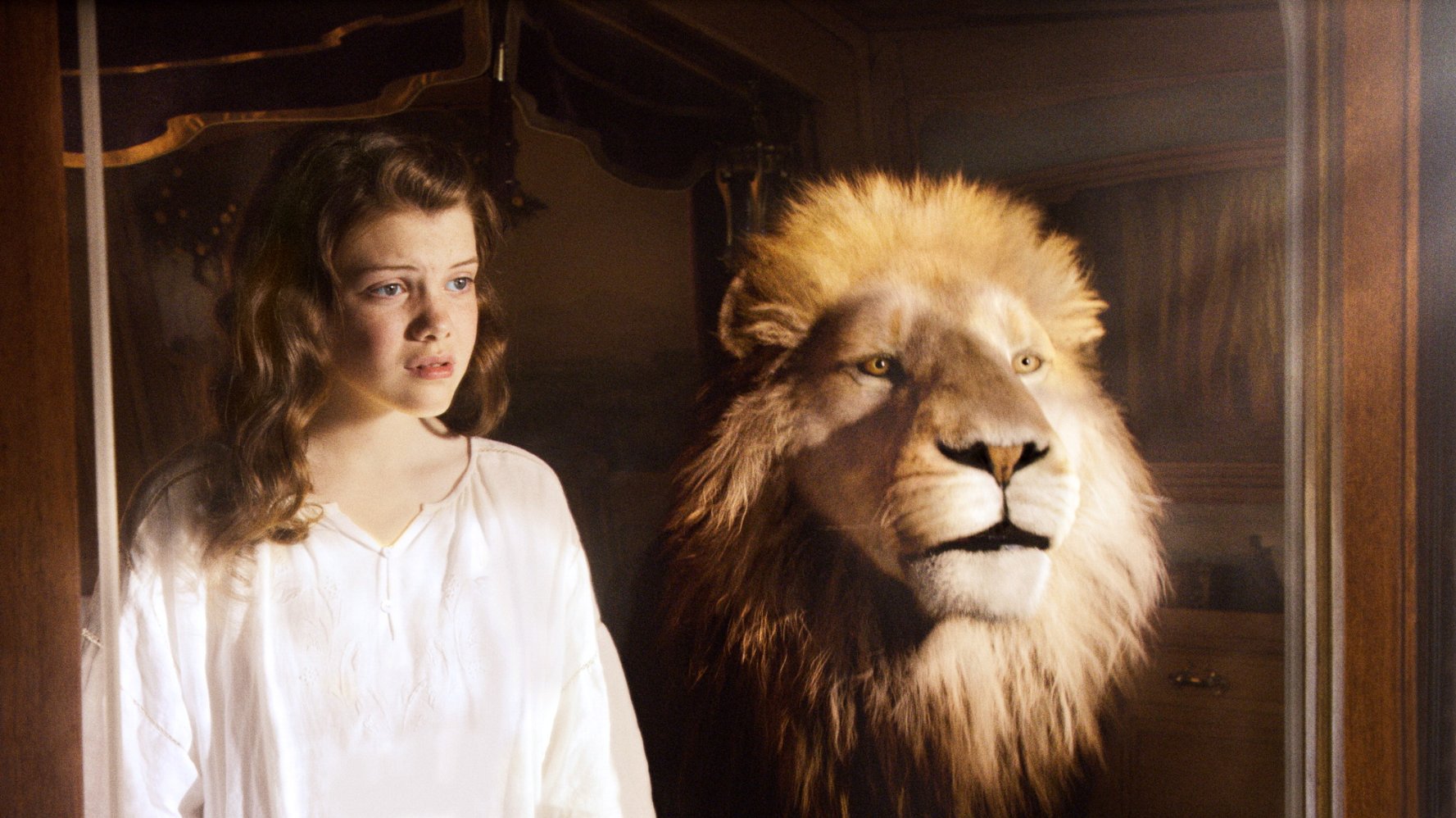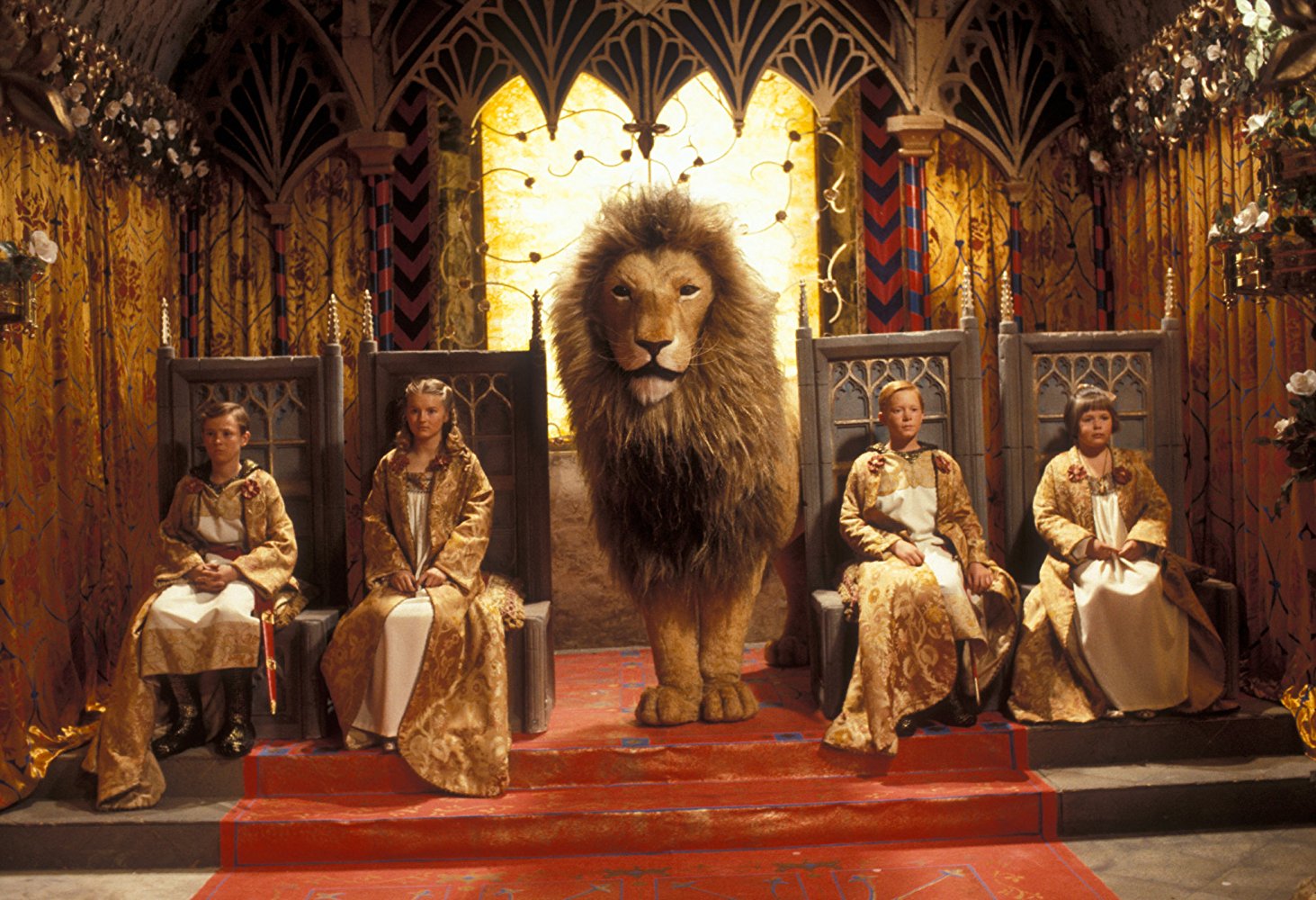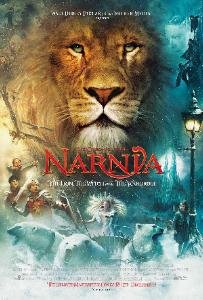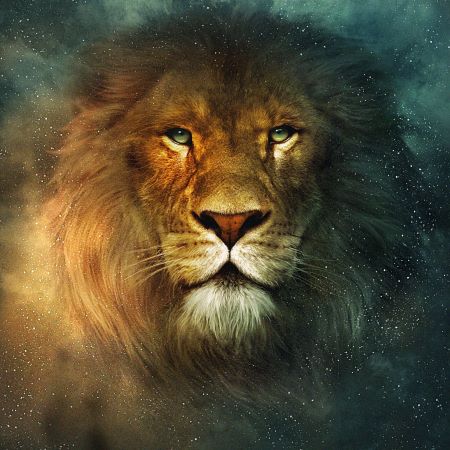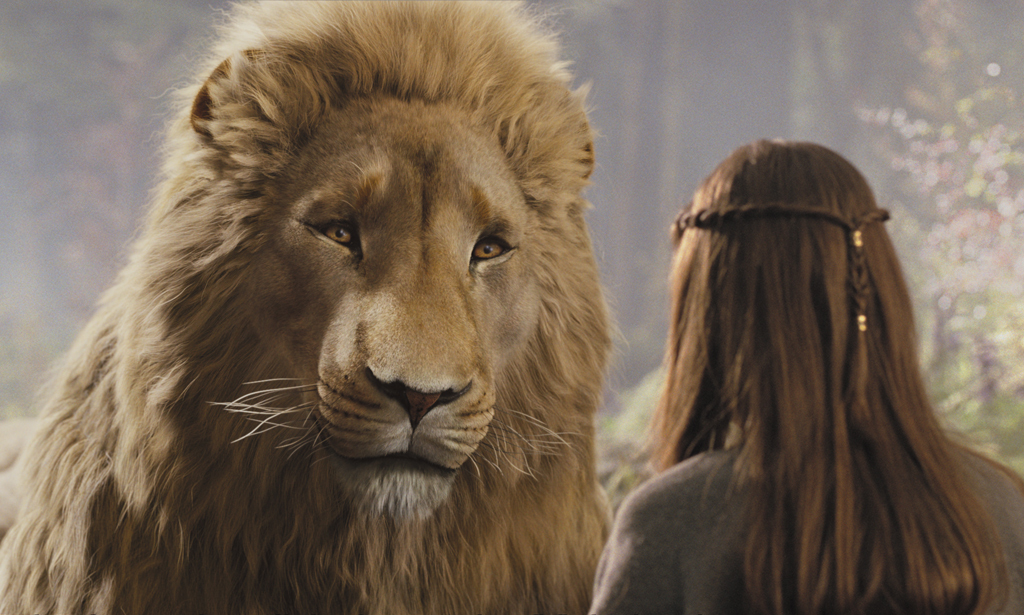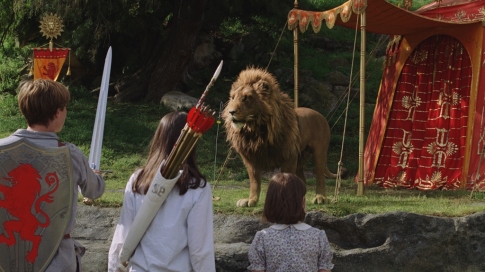INTRODUCTIONThe King of Narnia, The Great Lion, Lord of the whole wood, and son of the Emperor across the Sea; Aslan is the only recurring character in all the seven installments in the popular franchise The Chronicles of Narnia, written by C.S Lewis.Aslan is a talking Lion. He is described as wise, majestic and compassionate and his temporal and spiritual magical authority guides and saves Narnia throughout the course of its history.ROLES IN THE BOOKS(taken from Wikipedia):In The Magician's Nephew Aslan makes his first appearance at the creation of Narnia. When Digory, Polly, Jadis, Uncle Andrew, The Cabby, and Fledge inadvertently enter a new world using magic rings, they find it an empty void. Aslan appears, and through the power of his singing, calls the world of Narnia into existence.While all the characters immediately feel awe for Aslan, Jadis expresses this as fear and hatred, and unsuccessfully assaults Aslan with an iron bar before fleeing. Aslan is unperturbed, and continues calling plants and animals into existence. The power of his song is so great that even the iron bar, dropped on fertile earth, grows into a functioning lamp post, and toffees sprout into fruit trees.Aslan then selects certain species from among the beasts his song has called into existence, and gives them the power of speech and reason. He instructs them to look after the animals. He appoints The Cabby to be King Frank of Narnia, and brings his wife Nellie to Narnia from Earth to be Queen Helen.Aslan explains that Jadis will pose a great threat to the Narnians, and charges Digory and Polly with a quest to acquire a magic fruit to protect the land. He turns the horse Strawberry into a winged horse. When the quest is complete, he crowns The Cabby and Nellie, and advises Digory on how to care for his sick mother.At the end of the novel, he takes Digory, Polly and Uncle Andrew back to the Wood between the Worlds, without the use of magic rings, and warns them that their Earth is in danger of a similar fate to the dead world Charn which is the world that Jadis (the White Witch) is from.In The Lion, the Witch and the WardrobeWith Narnia in the hundredth year of the tyrannical rule of the White Witch (Jadis, who had condemned the land to endless winter ), all the Narnians are eagerly anticipating the return of Aslan. Aslan is on the move is repeated, in fearful secrecy, as a message of hope. The Witch has turned hundreds of Aslan's followers to stone namely those who refused to be in her pay. The Narnians expect Aslan to bring an end to the White Witch's tyrannical reign.The four human children (Peter, Susan, Edmund, and Lucy) are given shelter and aid by Mr. and Mrs. Beaver, who intend to lead them to Aslan. But before they set off, Edmund leaves to betray them to the White Witch. The children find Aslan leading a large gathering of Narnians who are preparing for war. Aslan sends some other Narnians to attack the Witch and her small entourage, during which they rescue Edmund. While they are away Aslan makes Peter a knight.The White Witch reappears and claims from Aslan the right to execute Edmund as a traitor, citing Deep Magic from the Dawn of Time. Aslan offers that the Witch might execute him in Edmund's place, and she accepts. On the Stone Table, as Susan and Lucy watch, the White Witch mocks, abuses, shaves, muzzles, and finally slays Aslan with her knife.After the Witch leaves with her army to attack the Narnians, Lucy, Susan, and a number of mice (from whom the mouse hero Reepicheep is descended) remove the bonds from Aslan's body. But as dawn breaks they find that his body is gone, and then Aslan reveals that he is alive once more, thanks to a Deeper Magic from before the Dawn of Time that the witch was not aware of, as she entered Narnia at its beginning. Aslan explains that when a willing victim who had committed no treachery was killed in a traitor's stead, the Table would crack and Death itself would start working backward. Aslan's exact words from chapter 15 do not clearly indicate whether or not it was within the witch's power to see this deeper magic, though they seem to imply that she could not. His language seems to imply that, had Jadis not been ill at ease when she was present at Narnia's creation, she might have understood this deeper magic, an important idea to the Christian metaphors of the series.Aslan goes to the Witch's palace and breathes on the statues of her petrified enemies, bringing them back to life. He leads them all to aid Peter, Edmund and the Narnian army who are fighting the Witch's army. At the conclusion of the battle, he leaps upon the witch and kills her.Aslan crowns the four children as Kings and Queens of Narnia, and then during the celebration he quietly slips away. The children say nothing about it, for Mr. Beaver had warned them, ...one day you'll see him and another you won't. Mr. Beaver's comments not only appear to contain Christian metaphors, but they also serve as a foreshadowing of Aslan's role in the books to follow.In The Horse and his BoyAslan's influence throughout The Horse and his Boy is primarily hidden. Secretly, he delivered the infant Prince Cor of Archenland from his enemies, placing him into the hands of a Calormene fisherman (who gave him the name of Shasta). Later, when Shasta meets Bree it is Aslan, disguised as a witless lion, who forces them into joining up with Aravis and Hwin. Aslan also appears to Shasta in the form of a cat comforting him when he feels abandoned at the Tombs of the Ancient Kings (although as a lion, he defends him from predatory jackals). It is Aslan who chases Bree and Hwin, giving them the speed needed to reach Archenland in time for Shasta to warn their king of an impending attack by the Calormene army. He gives Shasta the resolve to persevere and help save Archenland and Narnia from the invaders. He also slashes Aravis across her back with his claws. The attack is not terrible, however, and is later compared to the damage of a whipping. (Aslan later explains that his treatment of Aravis is punishment for a previous action. When she ran away from home, she left while her servant was sleeping, with no thought about the punishment the servant would receive. The cuts on her back were equal to the damage done when the servant was whipped.)Eventually, Aslan shows himself directly to the travellers, addressing their fears, or their self-pity, or their condescension towards others, or their pomposity. In one case, however, he affirms a purity of heart. Aslan reveals himself to Rabadash, the leader of the Calormen attackers in an effort to free him of his arrogant and violent ways. When kind words and forgiveness fail to soften Rabadash, Aslan resorts to an act of severe kindness: he turns Rabadash into a donkey. He leaves Rabadash with a cure for his condition , requiring that he humble himself before all of his Calormen people: Rabadash must go to the temple of the Calormen god, Tash (since Rabadash had insulted Aslan in Tash's name). There, he would be turned back into a human. Was he to journey too far from the temple, however, he would turn, forever, back into a donkey.In Prince Caspian1,300 Narnian years after the events in The Lion, the Witch and the Wardrobe, both Aslan and the Pevensie children have become near-forgotten myths. Now, the Telmarine humans who have traveled and settled down in Narnia, rule the land and try to kill and hunt down all Narnians, as they see talking animals and magic as a threat. Later it is revealed that King Miraz crowned himself after he killed his older brother and father of the rightful heir, Prince Caspian IX. To ensure his throne, King Miraz tries to kill Caspian X, but Caspian escapes into the forest, where Narnians offer him help and shelter. The children, newly returned to Narnia, are led the right way to their destination by Aslan, and find their faith tested as Aslan does not appear to them until they really try to see him.Aslan's How, a burial mound on the site of the Stone Table, is a gathering point for loyal Narnians, where Prince Caspian forms his army to fight against his uncle for Narnia. Meanwhile, Aslan re-awakens the spirits of the forest and the river, leading a Bacchanalian revel through the oppressed towns and fomenting a popular revolution. When the Telmarines are defeated, Aslan creates a door allowing the children to return to Earth. He tells Peter and Susan that they are, hereafter, too old to return to Narnia, and have learned all they could from their experiences in Narnia. Aslan also reveals the origins of the Telmarine.In Voyage of the Dawn TreaderWhile the newly-crowned King Caspian (the Prince of the previous book) is seeking seven lost mariners, the mouse Reepicheep hopes that their voyage will take them to Aslan's Country in the uttermost East. He was told by a dryad that his fate will be in Aslan's country. On many of the islands where they stop, a brief glimpse of Aslan, or his image, is enough to guide Caspian and his crew away from dangerous folly. When the recalcitrant Eustace is turned into a dragon, Aslan meets with him and pulls the dragon-skin away, leaving him as a human boy and a more pleasant person. At another island, Lucy enters the home of a magician and attempts to perform a spell that would make her dazzlingly beautiful, in spite of her knowledge that performing the spell would cause untold chaos as thousands of men would battle to win her favour. Just as she is about to say the words, however, she sees an image of Aslan snarling at her, frightening her from pronouncing the spell. Aslan appears later and gently reprimands her for having used another spell (one which allowed Lucy to see what her friends were saying about her, showing one of her friends denouncing her friendship with Lucy). Aslan tells Lucy that her friend did love her, but was frightened by an older girl who was present. He also assures Lucy that she will once again read a story-spell that she had read in the magician's house, which Lucy felt was the best story ever. Finally, Aslan answers Lucy's call for help when they are lost in the Island of Dreams and helps them escape. Eventually, Edmund, Lucy, Eustace and Reepicheep reach the world's end, where Aslan appears as a lamb. He shows Reepicheep the way to his country while helping the children return home. He also finally tells Edmund and Lucy that they are too old to return to Narnia, as he had told Peter and Susan in Prince Caspian, and that they must instead come to know him in their world, a relatively direct reference to the Christian themes of the series.In The Silver ChairThe story begins with Eustace Scrubb, who was introduced in The Voyage of the Dawn Treader, and his classmate Jill Pole, who are unhappy at their school, Experiment House, where bullying is left uncorrected. At Eustace's suggestion, they ask for Aslan's help while trying to escape from the bullies, and then blunder through a temporary interdimensional gate into Aslan's Country. Jill shows off, by moving too close to a high cliff, and Eustace, while trying to pull her back, falls off. Aslan appears and saves Eustace, by blowing him to Narnia. Aslan then explains to Jill that she and Eustace are charged with the quest to find the Narnian Prince Rilian, who had disappeared some years prior. He tells her that her task will be more difficult because of what she did. He then gives Jill four Signs , to guide her and Eustace on their quest: of these Signs, the fourth and final is that at a key moment they will be asked to do something in Aslan's name. Aslan then blows Jill into Narnia, where she arrives a few moments after Eustace. Aslan instructs Jill and Eustace to rescue Prince Rilian, following a series of signs. She appears in time to see a very old King Caspian, Tenth of that name, setting sail east to search for Aslan one last time. They do not get a chance to speak to him but speak with the Lord Regent, Trumpkin the Dwarf, and Trumpkin gives them room in the palace of Cair Paravel. Once there, they are aided by Master Glimfeather and a Parliament of his fellow talking owls (a pun on Chaucer's Parlement of Foules, but also a nod towards the use of the word parliament as a collective noun for owls, as exaltation is for larks). The owls explain that Rilian disappeared while searching for the green serpent that killed his mother, and is under the spells of an enchantress. As Jill and Eustace journey toward the far north of Narnia, they acquire a companion and guide, a gloomy but stalwart Marsh-wiggle, appropriately named Puddleglum.Aslan makes no further appearance until the end of the story, but his signs are central to the story, and belief in Aslan plays a crucial part in defeating the Lady of the Green Kirtle, who tries to destroy the children's belief in Narnia.In the end, he sends Jill and Eustace back to our world magically, also helping them repay the school bullies and make a better school in the process. Here they were also helped by Caspian who had always wanted to see a glimpse of their world, but only for five minutes of our time.In The Last BattleThe ape Shift disguises the reluctant donkey Puzzle as Aslan and fools the Narnians into thinking Aslan has returned, while issuing commands in his name.The encroaching Calormenes and browbeaten Narnians are encouraged by Shift and the unbelieving Calormene leader Rishda Tarkaan to treat Aslan and their god Tash as a single, combined being, Tashlan . Dissenters are thrown into Puzzle's stable, supposedly to meet Tashlan , so that they can be murdered by Calormene soldiers. King Tirian, the remaining loyal Narnians, and Jill and Eustace battle the Calormenes and their allies, but are forced through the stable door along with several dwarves who have lost faith in Narnia. They find themselves not in a stable, but in a paradise: Aslan's country. Aslan is there, and they watch through the stable door as the world of Narnia is destroyed. When the dwarves are thrown into the paradise, they are unable to see it and instead are certain that they are inside an ordinary stable. When Lucy asks Aslan to help them, he tells her that he will show her what he can and what he cannot do. He then growls at the dwarves, and makes food magically appear in their hands; however, this fails to convince them (they think that the growling is a machine and that the food is food that would be found in a stable). Aslan tells the children that the dwarves shut themselves out to him, and therefore cannot be reached (in a similar fashion to Uncle Andrew, from The Magician's Nephew).Aslan then commands Peter to shut the door on Narnia, and leads them through his country, which is a platonic ideal of Narnia. He greets Emeth, a devout yet kind Tash-worshipping Calormene, telling him that I and [Tash] are of such different kinds that no service which is vile can be done to me, and none which is not vile can be done to him. As they get further up and further in, the Narnians find Aslan's country getting bigger and better, eventually encompassing Earth as well. The very end also directs toward Christian themes, saying that Aslan did not appear as a lion anymore, and he (referring to Aslan, the lion) becomes capitalized as this happens..
Show less «

